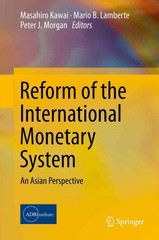Question
Consider a new deposit to the Canadian banking system of $1000. Suppose that all commercial banks have a target reserve ratio of 10 percent and
Consider a new deposit to the Canadian banking system of $1000. Suppose that all commercial banks have a target reserve ratio of 10 percent and there is no cash drain. The following table shows how deposits, reserves, and loans change as the new deposit permits the banks to create money. Round Change in Deposits Change in Reserves Change in Loans First $ 1,000 $ 100 $ 900 Second ________ ________ ________ Third ________ ________ ________ Fourth ________ ________ ________ Fifth ________ ________ ________ a. The first round has been completed in the table. Now, recalling that the new loans in the first round become the new deposits in the second round, complete the second round in the table. b. Complete the entire table. c. After the fifth round, what is the total change in deposits so far because of the single new deposit of $1,000? d. This deposit-creation process will go forever. On the limit (the end of forever!), the total change in reserves becomes equal to the value of the single new deposit of $1,000. I.e., until the new single deposit is completely held in the banking system as reserves. We saw in class and this infinite process money creation has a finite sum. Essentially, we showed that the eventual total changePage 5 of 5 in deposits is equal to 1 times the new deposit (or total change in reserves, as they are the same at the limit), where is the target reserve ratio. What is the eventual total change in deposits in this case? e. What is the eventual total change in reserves? What is the eventual change in loans?
Step by Step Solution
There are 3 Steps involved in it
Step: 1

Get Instant Access to Expert-Tailored Solutions
See step-by-step solutions with expert insights and AI powered tools for academic success
Step: 2

Step: 3

Ace Your Homework with AI
Get the answers you need in no time with our AI-driven, step-by-step assistance
Get Started


